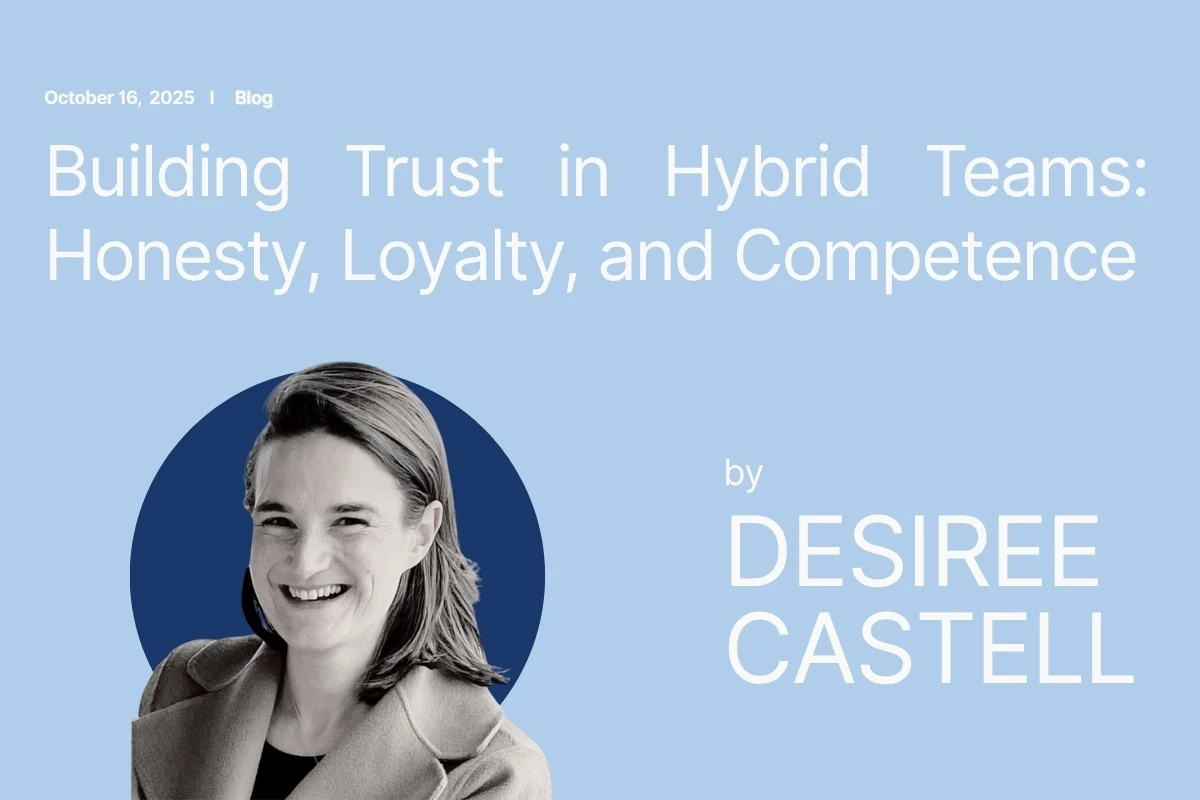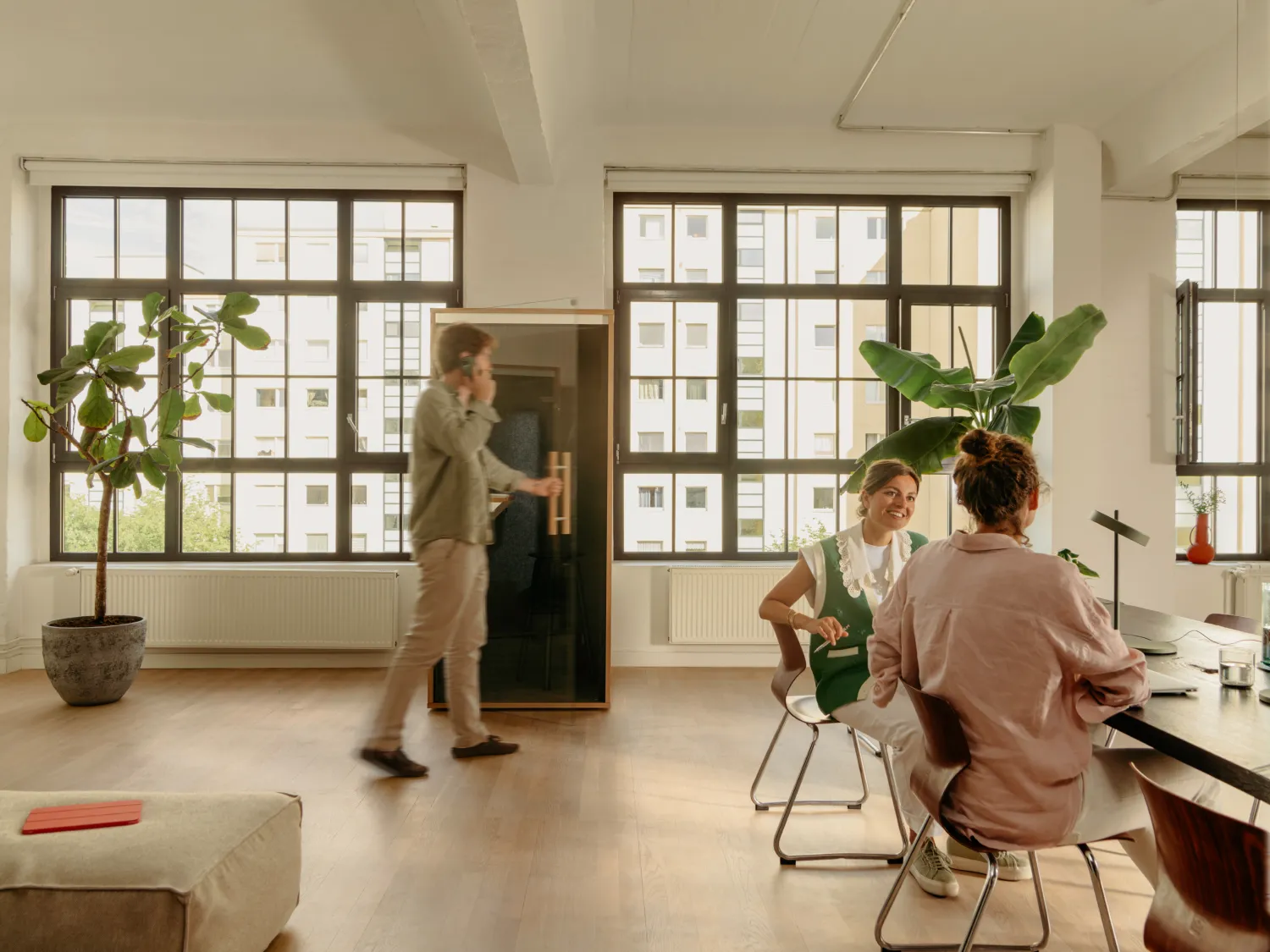Open Office Dilemma
Key Points at a Glance
The open office concept has transformed modern workspaces, replacing cubicles with flexible, collaborative environments. Companies adopted open layouts to foster teamwork, enhance communication, and make better use of office space; however, as many employees have discovered, the lack of barriers also comes with significant challenges.
Constant noise, interruptions, and the absence of private spaces can lead to decreased productivity and increased stress. Employees struggle to focus, and important calls or deep work sessions often become frustrating experiences. While open offices offer undeniable benefits, they also require careful planning to prevent them from becoming chaotic and unproductive.
So how can businesses strike the right balance between maintaining the benefits of an open office while minimizing distractions? The answer lies in providing employees with flexible, quiet spaces where they can focus when needed.
The Open Office Revolution: Why It Works and Where It Falls Short
Why Companies Love Open Offices
Open office designs gained popularity as businesses sought to break down barriers—literally and figuratively. The idea was to create more dynamic, cost-effective workspaces that promote:
- Collaboration – Employees can easily interact, exchange ideas, and work together.
- Flexibility – Open spaces allow for agile teams and adaptable layouts.
- Cost savings – Fewer walls and private offices mean lower overhead costs.
The Downside: Noise, Distractions, and Lost Productivity
While open offices encourage communication, they can also be overwhelming:
- Background noise – Conversations, phone calls, and office chatter can make it hard to concentrate.
- Frequent interruptions – Employees often find themselves distracted by movement and discussions happening around them.
- Lack of privacy – Personal calls, confidential meetings, and focused work become difficult in a fully open setting.
These challenges can lead to frustration, decreased motivation, and even burnout if employees are unable to get the quiet time they need to be productive.
Striking the Balance: How to Maintain Productivity in Open Workspaces
The key to a successful open office isn’t eliminating the concept—it’s enhancing it with designated quiet zones. Businesses can create a workspace that supports both collaboration and productivity by:
- Providing private, enclosed spaces for focused work
- Offering phone booths for private calls and meetings
- Giving employees control over their work environment
mute-labs Booths: The Solution for Open Office Productivity
To truly optimize open offices, companies need solutions that reduce distractions while maintaining flexibility. mute-labs booths offer the perfect answer by providing sound-insulated, private spaces that fit seamlessly into any office layout.
1. SOLO – A Private Space for Focused Work and Calls
- Perfect for: Employees who need a quiet retreat for important calls or deep focus.
- Key benefits: Compact design, superior sound insulation, and built-in ventilation.
2. QUATTRO – A Small Meeting Space for Productive Discussions
- Perfect for: Teams that need a quiet space for brainstorming sessions or video meetings.
- Key benefits: Accommodates up to four people, reduces office noise, and enhances communication.
3. DEEPWORK – Designed for Distraction-Free, Deep Focus
- Perfect for: Employees who require uninterrupted time for complex tasks.
- Key benefits: Maximum sound insulation, ergonomic seating, and optimized lighting.


Conclusion: Creating an Open Office That Works for Everyone
The modern office should empower employees, giving them both collaborative spaces and quiet zones for focused work. By integrating mute-labs sound-insulated booths, businesses can maintain the benefits of open layouts while solving their biggest challenges. The result? A more balanced, productive, and focus-friendly workspace.
Our Product Specsheet
Key Points at a Glance
The open office concept has transformed modern workspaces, replacing cubicles with flexible, collaborative environments. Companies adopted open layouts to foster teamwork, enhance communication, and make better use of office space; however, as many employees have discovered, the lack of barriers also comes with significant challenges.
Constant noise, interruptions, and the absence of private spaces can lead to decreased productivity and increased stress. Employees struggle to focus, and important calls or deep work sessions often become frustrating experiences. While open offices offer undeniable benefits, they also require careful planning to prevent them from becoming chaotic and unproductive.
So how can businesses strike the right balance between maintaining the benefits of an open office while minimizing distractions? The answer lies in providing employees with flexible, quiet spaces where they can focus when needed.
The Open Office Revolution: Why It Works and Where It Falls Short
Why Companies Love Open Offices
Open office designs gained popularity as businesses sought to break down barriers—literally and figuratively. The idea was to create more dynamic, cost-effective workspaces that promote:
- Collaboration – Employees can easily interact, exchange ideas, and work together.
- Flexibility – Open spaces allow for agile teams and adaptable layouts.
- Cost savings – Fewer walls and private offices mean lower overhead costs.
The Downside: Noise, Distractions, and Lost Productivity
While open offices encourage communication, they can also be overwhelming:
- Background noise – Conversations, phone calls, and office chatter can make it hard to concentrate.
- Frequent interruptions – Employees often find themselves distracted by movement and discussions happening around them.
- Lack of privacy – Personal calls, confidential meetings, and focused work become difficult in a fully open setting.
These challenges can lead to frustration, decreased motivation, and even burnout if employees are unable to get the quiet time they need to be productive.
Striking the Balance: How to Maintain Productivity in Open Workspaces
The key to a successful open office isn’t eliminating the concept—it’s enhancing it with designated quiet zones. Businesses can create a workspace that supports both collaboration and productivity by:
- Providing private, enclosed spaces for focused work
- Offering phone booths for private calls and meetings
- Giving employees control over their work environment
mute-labs Booths: The Solution for Open Office Productivity
To truly optimize open offices, companies need solutions that reduce distractions while maintaining flexibility. mute-labs booths offer the perfect answer by providing sound-insulated, private spaces that fit seamlessly into any office layout.
1. SOLO – A Private Space for Focused Work and Calls
- Perfect for: Employees who need a quiet retreat for important calls or deep focus.
- Key benefits: Compact design, superior sound insulation, and built-in ventilation.
2. QUATTRO – A Small Meeting Space for Productive Discussions
- Perfect for: Teams that need a quiet space for brainstorming sessions or video meetings.
- Key benefits: Accommodates up to four people, reduces office noise, and enhances communication.
3. DEEPWORK – Designed for Distraction-Free, Deep Focus
- Perfect for: Employees who require uninterrupted time for complex tasks.
- Key benefits: Maximum sound insulation, ergonomic seating, and optimized lighting.


Conclusion: Creating an Open Office That Works for Everyone
The modern office should empower employees, giving them both collaborative spaces and quiet zones for focused work. By integrating mute-labs sound-insulated booths, businesses can maintain the benefits of open layouts while solving their biggest challenges. The result? A more balanced, productive, and focus-friendly workspace.
.jpg)

.svg)

.svg)
.svg)

.svg)
.svg)
.svg)






